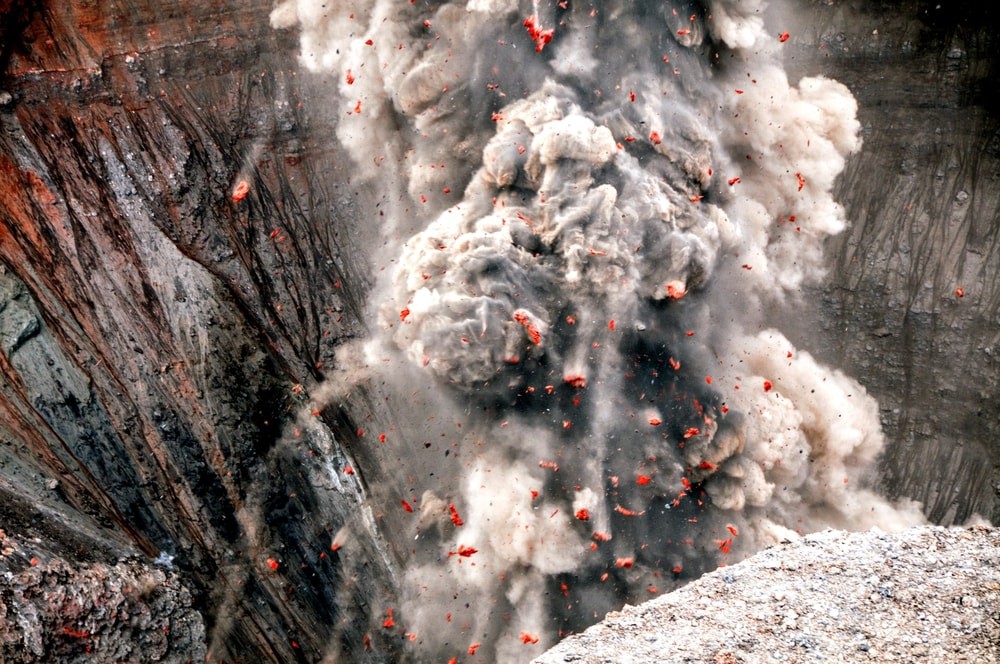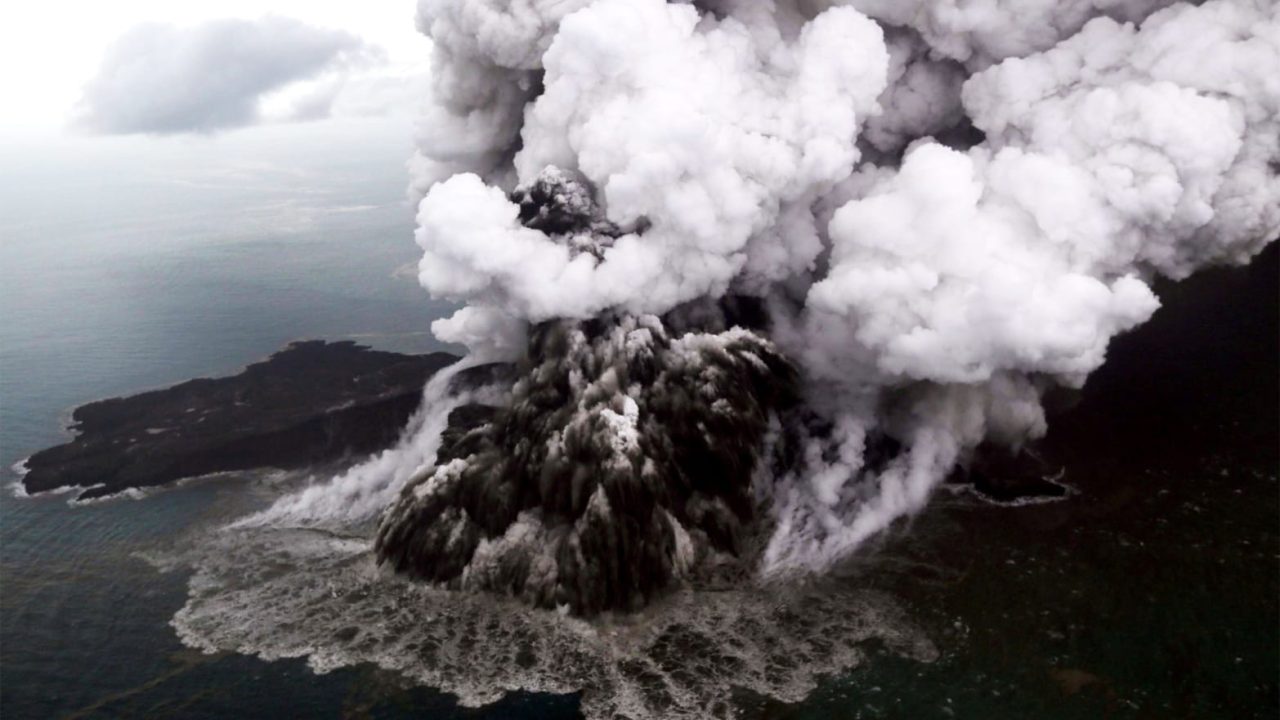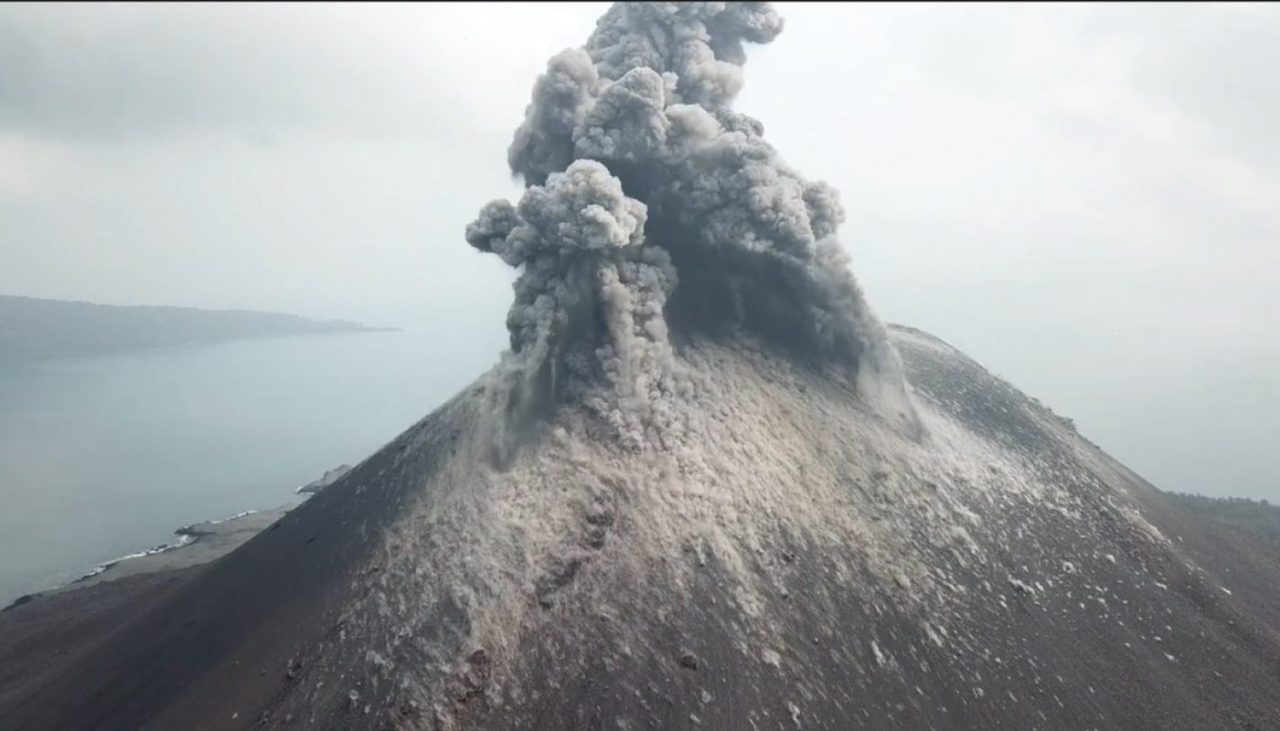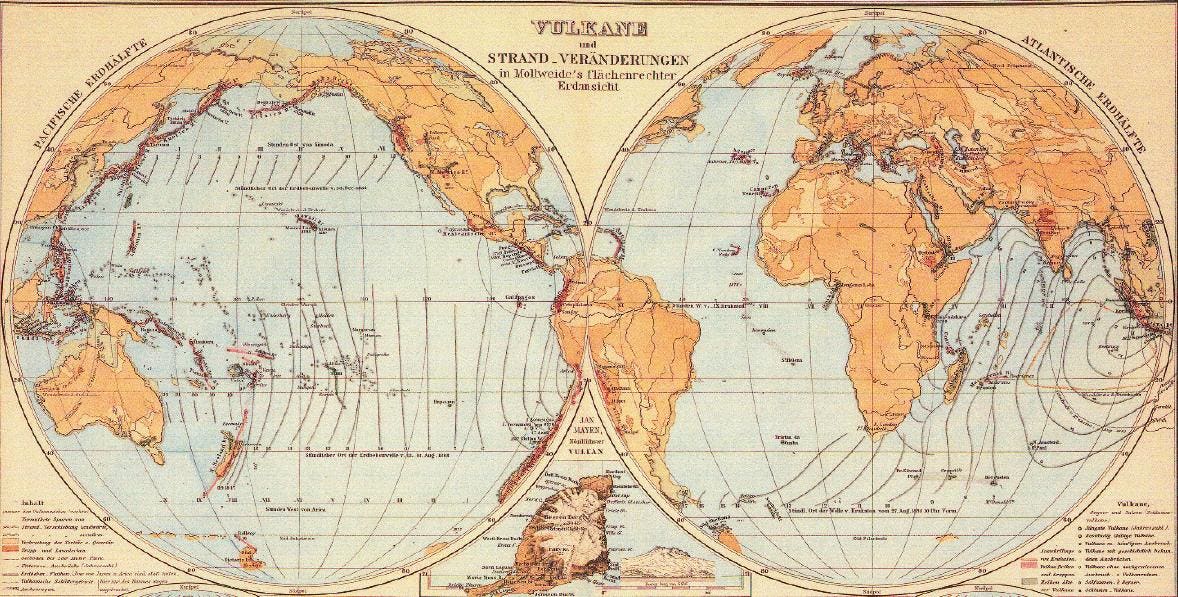The eruption of the Krakatau (or Krakatoa) on a small island located in the middle of the Sunda Strait (at the time part of the Netherlands East Indies) in August 1883 was, in many aspects, the first global catastrophe. And thanks to modern communications, Krakatau was the first news story to go (literally) around the world.
The news about the eruption, its following tsunami and the more than 36,000 victims traveled fast thanks to the recently installed worldwide telegraphic network. The first journal to bring the news about the eruption was the Dutch Java Bode the very same day. The international media soon followed. For example, the English journal The Illustrated London News published some fanciful drawings of the region before the devastation. The articles and tragic tales of survivors published in the newspaper helped to bring the catastrophe in the collective mind and make it into the most famous eruption on Earth.

Today Krakatau explodes in movies, books documentaries and even comics. By contrast, the eruption of the Tambora only 70 years earlier and in the almost same region is almost forgotten today, despite being more powerful. At the time only some local western merchants and diplomats recorded that eruption and only one year later an account of the catastrophe was published in the little known History of Java by British governor of Indonesia and naturalist Sir Thomas Stamford Bingley Raffles.

The effects of the eruption were also noted all around the world.
The final explosion of Krakatau produced the loudest sound ever recorded in modern history, heard on over 10% of Earth’s area. Reports of a distant cannonade or what seemed to be gunfire were reported from Australia and the island of Mauritius, more than 4,650 km distant from the erupting volcano. The pressure waves traveled within a few hours several times around the globe. Instruments measured the sudden peaks in Britain as in America. At first unexplained those peaks, as the first news announced the eruption, were soon attributed to Krakatau.
Krakatau produced an eruption column between 25 and 43 miles high, visible by all ships passing the Sunda Strait. Within two weeks the ash, gases and aerosols were blown by atmospheric winds westwards along the equator. Months after the eruption the volcanic cloud spread from the equatorial to the mid-latitude zones. The fine grains, trapped in the higher layers of earth’s atmosphere, scattered the sunlight for many years to come, causing strange optical phenomena, like blood-red skies. British painter William Ascroft was so impressed by the colors that he produced hundreds of paintings, with date and exact time, after November 1883, showing the changing skies for over four years. The aerosols also caused a drop in the global temperature and influenced weather patterns, bringing a wet phase in Arizona’s deserts.

As the Sunda Strait was and still is an important passage from the Indian Ocean to the Chinese Sea, news about the eruption and destruction of harbors and lighthouses in the area were of special interest to merchants, politicians and the public in general. Almost two thirds of the telegraph lines were in British hands, so British agencies could rely on a vast network to gather news about the worldwide effects and disturbances of the eruption. News from Australia to London traveled in just half a day on cable, while a letter delivered by steamship would have needed 45 days for the same distance. The newspaper, fueled by this quick and constant stream of eyewitness reports and eager to satisfy the interest of the public, wrote in great detail about the catastrophe. Geologists would later use those articles to compile a detailed report of the eruption of Krakatoa, and subsequent phenomena.

Krakatau was also the first scientifically well recorded and studied eruption of a volcano, from the very beginning to its disastrous ending. In May of 1883, the first clouds of vapor were noted above the crater, followed by a phase of quiescence until August of the very same year. During this phase, authorities organized geological expeditions to document the volcano and gather some samples of volcanic rocks. For the first time, the deadly effects of pyroclastic flows were noted, but not yet recognized as such.
Unfortunately, nobody realized the real danger of Krakatau. As the island was uninhabitable it was believed that it would pose no threat to human lives. Between August 26 and 27 a series of explosions almost totally annihilated the entire volcano, causing a series of tsunami-waves that killed 36,000 people along the coasts of Java and Sumatra. Higher waves as usual were noted along the coasts of the Pacific and Indian oceans. Pumice from the Krakatau was washed ashore the coast of Africa months after the disaster. Geologists only then realized how dangerous explosive volcanoes, as found along subduction zones around the Earth, really can be.

The study of the sad remains of the former island of Krakatau also gave birth to a new scientific discipline: disturbance ecology. The colonization by plants and animals of the virtually sterilized remains was documented in great detail by geologists, zoologists and botanist, visiting the area still years after the eruption.
The observations made first at Krakatau would be still of great value much later to understand the colonization of devastated or new formed terrain, like the volcanic island of Surtsey in Iceland (born from a volcanic eruption in the sea in the years 1963-67) and Mount St. Helens in the U.S. (exploded in 1980).
The story of Krakatau is still not over. In 1930, in the caldera formed by the explosion and collapse of the old volcano a new one, Anak Krakatoa, the child of Krakatau, started to grow. The child has grown fast, displaying a continuous activity since its first eruption it rises by 16 feet per year and most probably will keep growing.
Source: forbes.com








